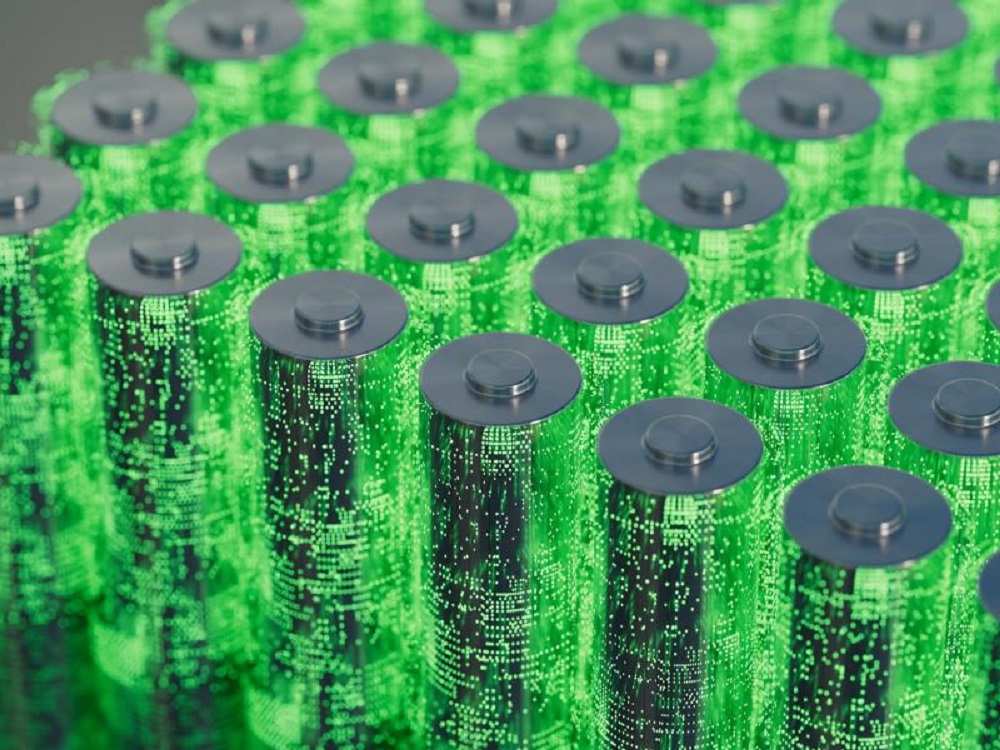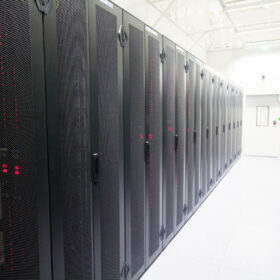It’s been a jubilant couple of weeks in Washington, DC, with everyone from clean energy developers to environmental advocates to labor unions celebrating the passage of the landmark climate provisions in the Inflation Reduction Act. There’s much to celebrate: America is finally joining the rest of the developed world in setting ambitious carbon pollution reduction goals, putting real money behind it.
Billions of dollars are flowing toward all aspects of the energy transition, from production to infrastructure. Soon America will move away from dirty fossil fuels and electrify everything. Limitless clean electricity from solar and wind will flood the grid, straight into our electric cars, forklifts, battery storage systems and smartphones.
Except there’s a big problem. The plan to electrify everything relies on lithium batteries to store all this clean energy. The world’s largest lithium sources can’t be cost effectively purified to meet the growing demand. Purifying lithium so that it’s usable in, say, electric vehicle batteries, costs a fortune. The lithium battery production bottleneck will block the adoption of 350 million electric vehicles by 2040 unless supply chain constraints are removed.
I’ve spent over two decades in the chemical, energy, and automotive sectors, watching battery storage development ramp up in fits and starts. I’ve tracked lithium availability, public policy, and the price of gasoline. The move away from fossil fuels to electric is inevitable. But there was one critical question: How can we unleash lithium, getting it from more sources and refining it in more places?
A snapshot of lithium production is that the mineral can be extracted anywhere in the world – from brines found deep underground or on flood plains, from rock, clay, or batteries that can be recycled. That lithium, however, needs to be refined into high-quality lithium hydroxide and carbonate, and 80% of that refinement happens in Asia, with China accounting for more than half of that production.
The carbon footprint made by transporting lithium to and from Asia in order to make an eco-friendly vehicle is ironic. Trade tensions between the U.S. and China makes the lithium hydroxide and carbonate supply unreliable, not to mention the constant COVID-related shutdowns in China that continue to rock global supply. And the cost to North American manufacturers? Through the roof. With money pouring into electric vehicle manufacturing, demand for battery-grade lithium will further outstrip supply. In fact, Benchmark Mineral Intelligence forecasts the lithium supply gap to be 725kt by 2040 in North America and Europe, enough to hold back 350 million electric vehicles.
The industries that depend on lithium batteries are about to hit a brick wall, but we know how to avoid it:
Unlock lithium at its source. More than 60% of Earth’s lithium is in brines, which has been mostly inaccessible until now. We have developed a way to extract that lithium so it can compete with lithium from other sources, at even lower prices.
Decentralize lithium refinement. We must refine lithium on site of any manufacturer that needs it. We must be able to utilize lithium from any source. Whether you’re mining lithium or making cars or batteries, if you are refining on site, you no longer need to pay to ship the mineral around the world; it can happen right there on your property. Small- and mid-sized lithium producers and extractors would have an affordable option to refine lithium on their own. Geopolitical risks are minimized, and lithium refinement costs from brine feedstocks would be slashed by 40 percent.
Eliminate waste. If an electrochemical refinement process was used onsite, as opposed to the chemical phase separation method used in Asia today, the byproducts of that lithium refinement process would be hydrochloric acid and sulfuric acid, which can be used to extract more lithium. Loop closed.
Defenders of gasoline-powered vehicles claim that the relics of internal combustion will end up in landfills, and that the processing of batteries creates lots of pollution and waste. But every successful industry has had to overcome significant roadblocks; we can locate alongside battery recyclers to efficiently and economically refine lithium from recycled batteries, which creates a closed loop battery value chain and a more sustainable energy source. In the interest of clean air and national security, we must remove as many inefficiencies from lithium battery production as possible. Until then, President Biden’s vision for the clean energy transition won’t live up to its potential.
Jose Francisco Velasco Davis is VP of Commercialization at Mangrove Lithium. He has 20 years of experience in the chemicals, battery and automotive industries where he has helped companies meet supply chain, financial and environmental goals.
The views and opinions expressed in this article are the author’s own, and do not necessarily reflect those held by pv magazine.
This content is protected by copyright and may not be reused. If you want to cooperate with us and would like to reuse some of our content, please contact: editors@pv-magazine.com.








Not to sweat –
We shall in another a year hold the largest quantity of Lithium in the World – right here in California.
Our Renewable Energy Generation will make this happen in record speed. Just pay attention to our work!
And many Batteries will be made – with other minerals so none will explode nor catch fire and can be rapidly charged (in 8-minutes) and with 15,999 cycles or more – plus in custom sizes and so very portable. These will fire EV’s with a U-BUS. Trust us – American ingenuity at work powered by self and my inventions!
Good article and would like to see more on the more than 13 new startups that intend to refine lithium. One of them is EnergyX who has deployed a modular prototype refinery in South America where huge amounts of lithium brines are located. Also, as part of its continuing vertical integration, Tesla is getting into lithium refining and plans to build a refinery on the Gulf Coast either in Texas or Louisiana very soon.
Lead Acid Deep Cycle batteries may be heavy, but for residential or commercial use, where weight and space are not a problem, could be used for most solar or wind storage applications. A proven storage system for over 100 years, it has been neglected because of the lithium battery for automobiles has a smaller footprint. When they come up with a lithium or other chemistry, that costs less to use than lead acid, then they will get my business.
LiFePO4 batteries DO cost MUCH less than lead-acid batteries when you look at the lifetime cost. A 100Ah LiFePO4 has a much larger capacity than a 100Ah lead-acid battery because it can be charged to 100% and discharged to 20% for around 5,000 cycles before replacement. A Pb-acid battery can only be discharged to 50% and even then, they only last 500 to 1,000 cycles. I built a 14.3KWh LiFePO4 battery for $2,500, including the 250A BMS. That’s 17.4 cents per watt-hour.
I looked at a cheap deep-cycle lead-acid battery at Walmart which was $90 for 122Ah. That comes out to $90 / (12V x 122Ah) = 6.14 cents per Wh.
When you apply the depth of discharge disadvantage (0.5/0.8) and the cycle life disadvantage (1,000/5,000) factors, you discover that the lead-acid battery costs you 2.8 times as much as the lithium battery over their life times.
My 80 – DC24 100-amp hour batteries cost $80.00 each at Walmart and have lasted over 2000 cycles or 6 years. All of the older charge controllers will charge a varied list of lead acid batteries but will not correctly charge LIFePO4 Batteries so a special, more expensive MPPT charge controller must also be used. The capacity of my 80 lead acid batteries to deliver power without overheating is far greater than the limited delivery of LiFePO4 or lithium-ion batteries. My system, including the 50% charge/discharge factor (30% at the bottom for the minimum inverter voltage reserve and 20% at the top off that cannot be reached without loss of solar power in the pulse mode) is 56 KWh equivalent that can deliver up to 16,000 watts of power without even getting warm through 4–2000-watt modified sine wave inverters plus 2–3000-watt pure sine wave inverters going to different loads plus 4–700-watt lighting load inverters. Your 16–100-amp hour 12 volt or 4–100-amp hour 48-volt batteries price out at $2,500.00 would require all new MPPT charge controllers and if the 48-volt system 60 amp is used pricing out at $427.00 each, While the 12-volt 60-amp charge controller for lead acid prices out at $189.00 plus the expensive 3,000-watt 48-volt inverters at $429.00 each and my most expensive 3000-watt 12-volt pure sine wave inverter was $320.00. You are correct. if you are a “do it yourselfer” and build the whole system from scratch at 48 volts, using all lithium battery supported components, your lithium system would cost more to build but cost less over time with $625.00 for a 100-amp hour 48-volt LiFePO4 batteries at today’s prices. I would need 16 of the 48 volts. 100-amp hour LiFePO4 batteries. When I started building my system, none of these systems were available in 2007 so prices have come down on the solar panels, charge controllers, LiFePO4 batteries so why is the price of a power wall or other brand of commercial wall mounted battery system $7,000.00 each for only 11.2KWh of usable storage when we can build it for $2,500.00 buying everything at retail?
Suggest a few things:
Reserve lithium for applications it is best suited for like consumer EVs and buffering your rooftop solar panels and all our little portable gadgets. For grid scale storage we should not be using lithium. Instead use vanadium flow batteries, and other storage technologies.
Second, let the car manufacturers own the batteries. Consumers should just rent them month to month like Vin Motors subscription plan. Why own a proprietary black box you can’t repair and depreciates in value with each charge. Instead consumers should just pay for the range they want, and get it. If it declines the vendor is on the hook to replace. At the end of life, vendor gets their battery back and they are best positioned to make deals for a second life for the equipment doing something else, or recycling/remanufacturing.
Third, simply believe in the powerful combination of capitalism and good industrial policy. Both pieces are in place now with the Inflation Reduction Act, and the problems will get solved.
Dead Lithium Ion Batteries that leave behind Toxic Waste will ensure the DEATH & DEMISE of this Technology…
• EV’s will be replaced by ZPV’s … that use ONLY SOLAR ENERGY and leave no Pollution during Operation or After Death.
• UHES.. using the Century Old PHS (Pumped Hydro Storage) Technology will provide the needed 120TWhrs/Day or 40,000TWhrs/yr S2S .. Sunset-To-Sunrise Energy Storage Needed for a 180,000TWhrs/yr Global ZRRO POLLUTION EARTH using ONLY PV Panels
Apparently you’ve missed seeing all the companies that are recycling lithium batteries. They can recycle nearly all the highly valuable materials in the batteries. The top 10 include:
(1) LI-CYCLE CORP.
(2) ACCUREC Recycling GmbH
(3) Battery Solutions
(4) G & P Service
(5) Redwood Materials
(6) Retriev Technologies
(7) SNAM S.A.S.
(8) Recupyl
(9) Umicore
(10) SITRASA